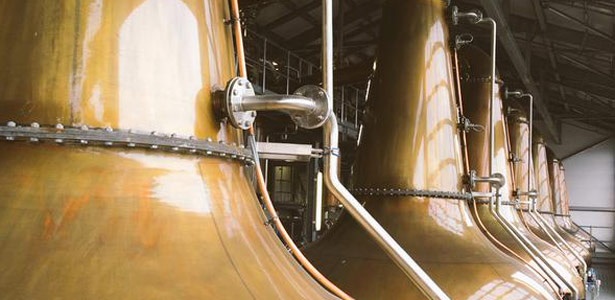Food24 had the opportunity to interview Diageo single malt brand ambassador Donald Colville about Scotch single malt whisky. His favourite way to drink a single malt is neat, in front of a roaring fire, in a leather armchair, with one hand on his dog’s head. But, he says, there is much more to single malt whisky than meets the eye.
We chatted to him about what makes Scotch single malt so special.
1. What defines a single malt whisky?
A single malt Scotch whisky is an incredibly protected product and as such has a very clear definition. Basically it is a product from one single malt whisky distillery making whisky from only malted barley in copper pot stills in a batch process.
Single malt Scotch whisky must be made, matured and bottled in Scotland. There are currently 115 licensed distilleries in Scotland each making a beautifully unique flavour. From the light and delicate whiskies in the Lowlands to the rich fruity whiskies from the Speyside region, to the incredibly smoky flavours in the whiskies from the islands, in particular the enchanting Island of Islay.
2. To what do you attribute the rise in popularity of single malt whiskies?
Scotch whisky is the world’s favourite whisky. It has the biggest global reach of any whisky and is the only one that people ask for by the country it is made in, Scotch. For me Single malt Scotch whisky has been cool since forever.
3. Whisky has a lot of history behind it. Can you share a bit of Scotch whisky history with our audience?
I love the story of Cardhu single malt Scotch whisky, the distillery pioneered by a woman. The distillery was founded by a lady called Helen Cumming who, along with her husband, would make whisky on their farm. Now, at this time they were distilling without permission and the excise men would scour the country looking for people making whisky so they could impose a tax on them.
When they would come to the door of Helen’s house, she wouldn’t hide or run away, she would invite them in. She would give them food and maybe even a bed for the night and the whole time she would be baking in her kitchen to mask the smells of distilling.
Then, as they were settled in the house, she would make her excuses and leave to hang her washing on the line. This however was a plan to warn the local distillers that the excise men were in the area, and she would do this by hanging a red sheet on her washing line as a beacon. This truly shows the generous spirit of the Cumming family that flowed through the generations that followed her. Her daughter-in-law Elizabeth took over the distillery from her and was responsible for growing it into the brand we know and love today.
4. What is your favourite way to enjoy a single malt Scotch?
There is no right or wrong way to enjoy a malt. The diversity of flavours gives you so many possibilities. We make our single malts so perfect and so pure that they can, and should be, drunk neat as this is the best way to truly understand all the flavours. But it doesn’t mean we always have to! I am a huge advocate for the mixability of malts. Take for example Talisker Storm, as a malt in a whisky glass it is perfection but if you pour it into a tall glass with loads of ice and some fresh mint then top it up with soda you have an incredibly fresh, tall drink. For similar reasons I love single malt cocktails, we expect our chefs to be using the best and most diverse products for our meals, should we not give our bartenders the same rights.
5. Which is your favourite whisky cocktail?
My go-to whisky cocktail is an Old Fashioned, a true classic cocktail but depending on the single malt and bitters you use you will get incredibly different drinks. For example an Old Fashioned made with Oban 14 year oold and orange bitters will be a very different to an old fashioned made with Caol Ila and lemon bitters, but at their core they are both an Old Fashioned.
6. Many people think the older/more aged the whisky is the better and more expensive it is. Is this true?
Not at all. Whisky that is older is more expensive not because it is better but because it is rarer, there is less of it and we have had to nurture it. Over time we lose volume in the cask due to evaporation, a process romantically called ‘the angels share’. This can be as much as three quarters of the cask gone for a 20 year old. This is why they are more expensive.
We are still learning as an industry, even after nearly 400 years, and because of this we understand maturation better so we know that some casks can deliver whisky that is intrinsically perfect at 8 years old while some need a bit or a lot longer. It is because of this that we can now do bottlings of ages not commonly seen in the world of whisky or bottlings that carry no age at all as we are taking multiple ages and combining them together to create new flavour profiles. These are still very much single malts and allow our blenders to create new and exciting whiskies.
Follow Donald Colville on Twitter to find out more about single malts.

